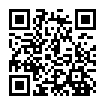Социофизические методы в исследованиях науки и технологий
Научная статья
Для цитирования
Егерев С. В. Социофизические методы в исследованиях науки и технологий // Управление наукой: теория и практика. 2025. Том 7. № 2. С. 155-163. DOI: https://doi.org/10.19181/smtp.2025.7.2.9 EDN: UBWPSL
Аннотация
Социофизика рассматривается как перспективное междисциплинарное направление, применяющее методы физики для анализа социальных систем, особенно в контексте исследований науки и технологий. Прослеживается историческое развитие социофизики от идей Д. Юма до современных подходов, основанных на анализе больших данных. Обсуждаются ключевые модели и методы социофизики: клеточные автоматы, модель Изинга, агентные модели, модели самоорганизации и др., а также их применение в исследованиях научных коллабораций, патентной активности и других аспектов развития науки и технологий. Подчёркиваются роль проектов с участием общественности («наука граждан») и необходимость интеграции социофизических методов с традиционными подходами социальных наук как во избежание редукционизма, так и для получения более полного понимания сложных социальных явлений.
Ключевые слова:
большие данные, математическое моделирование социальных процессов, междисциплинарный подход, эмпирические методы, cамоорганизация, наука граждан, редукционизм
Литература
1. Jusup M., Holme P., Kanazava K. [et al.] Social physics. Physics Reports. 2022;948:1–148. DOI 10.1016/j.physrep.2021.10.005.
2. Castellano C., Fortunato S., Loreto V. Statistical physics of social dynam-ics. Reviews of Modern Physics. 2009;81(2):591–646. DOI 10.1103/RevModPhys.81.591.
3. Pentland A. Social physics: How good ideas spread – the lessons from a new science. New York, NY : The Penguin Press; 2014. x, 300 p. ISBN 978-1594205651.
4. Amuchastegui M., Birch K., Kaltenbrunner W. The intersections between sociology and STS: A Big Data approach. Sociological Perspectives. 2023;66(5):868–887. DOI 10.1177/07311214231167170.
5. Stauffer D. Social applications of two-dimensional Ising models. American Journal of Physics. 2008;76(4):470–473. DOI 10.1119/1.2779882.
6. Wąs J., Sirakoulis G. Ch. Cellular automata applications for research and industry. Journal of Computational Science. 2015;11:223–225. DOI 10.1016/j.jocs.2015.10.005.
7. Abar S., Theodoropoulos G. K., Lemarinier P., O’Hare G. M. P. Agent Based Modelling and Simulation tools: A review of the state-of-art software. Computer Science Review. 2017;24:13–33. DOI 10.1016/j.cosrev.2017.03.001.
8. Ma T., Nakamori Y. Agent-based modeling on technological innovation as an evolutionary process. European Journal of Operational Research. 2005;166(3):741–755. DOI 10.1016/j.ejor.2004.01.055.
9. Moreno J. L. Foundations of sociometry: An introduction. Sociometry. 1941;4(1):15–35. DOI 10.2307/2785363.
10. Zhu Y., Zhang B., Wang Q. A., Li W., Cai X. The principle of least effort and Zipf distribution. Journal of Physics: Conference Series. 2018;1113:012007. DOI:10.1088/1742-6596/1113/1/012007.
11. Nicholls P. T. Price’s square root law: Empirical validity and relation to Lotka’s law. Information Processing & Management. 1988;24(4):469–477. DOI 10.1016/0306-4573(88)90049-0.
12. Bornmann L., Marx W. The Anna Karenina principle: A way of thinking about success in science. Journal of the American Society for Information Sci-ence and Technology. 2012;63(10):2037–2051. DOI 10.1002/asi.22661.
13. Gershenson C., Trianni V., Werfel J., Sayama H. Self-organization and ar-tificial life. Artificial Life. 2020;26(3):391–408. DOI 10.1162/artl_a_00324.
14. Weidlich W. Physics and social science – the approach of synergetics. Physics Reports. 1991;204(1):1–163. DOI 10.1016/0370-1573(91)90024-G.
15. Poudel R., McGowan J., Georgiev G. Y., Haven E., Gunes U., Zhang H. Thermodynamics 2.0: Bridging the natural and social sciences. Philosophical Transactions of the Royal Society A. 2023;381(2252):20220275. DOI 10.1098/rsta.2022.0275.
16. Perelló J., Larroya F., Bonhoure I., Peter F. Citizen science for social phys-ics: Digital tools and participation. The European Physical Journal Plus. 2024;139(7):572. DOI 10.1140/epjp/s13360-024-05336-3.
17. Schweitzer F. Sociophysics. Physics Today. 2018;71(2):40–46. DOI 10.1063/PT.3.3845.
2. Castellano C., Fortunato S., Loreto V. Statistical physics of social dynam-ics. Reviews of Modern Physics. 2009;81(2):591–646. DOI 10.1103/RevModPhys.81.591.
3. Pentland A. Social physics: How good ideas spread – the lessons from a new science. New York, NY : The Penguin Press; 2014. x, 300 p. ISBN 978-1594205651.
4. Amuchastegui M., Birch K., Kaltenbrunner W. The intersections between sociology and STS: A Big Data approach. Sociological Perspectives. 2023;66(5):868–887. DOI 10.1177/07311214231167170.
5. Stauffer D. Social applications of two-dimensional Ising models. American Journal of Physics. 2008;76(4):470–473. DOI 10.1119/1.2779882.
6. Wąs J., Sirakoulis G. Ch. Cellular automata applications for research and industry. Journal of Computational Science. 2015;11:223–225. DOI 10.1016/j.jocs.2015.10.005.
7. Abar S., Theodoropoulos G. K., Lemarinier P., O’Hare G. M. P. Agent Based Modelling and Simulation tools: A review of the state-of-art software. Computer Science Review. 2017;24:13–33. DOI 10.1016/j.cosrev.2017.03.001.
8. Ma T., Nakamori Y. Agent-based modeling on technological innovation as an evolutionary process. European Journal of Operational Research. 2005;166(3):741–755. DOI 10.1016/j.ejor.2004.01.055.
9. Moreno J. L. Foundations of sociometry: An introduction. Sociometry. 1941;4(1):15–35. DOI 10.2307/2785363.
10. Zhu Y., Zhang B., Wang Q. A., Li W., Cai X. The principle of least effort and Zipf distribution. Journal of Physics: Conference Series. 2018;1113:012007. DOI:10.1088/1742-6596/1113/1/012007.
11. Nicholls P. T. Price’s square root law: Empirical validity and relation to Lotka’s law. Information Processing & Management. 1988;24(4):469–477. DOI 10.1016/0306-4573(88)90049-0.
12. Bornmann L., Marx W. The Anna Karenina principle: A way of thinking about success in science. Journal of the American Society for Information Sci-ence and Technology. 2012;63(10):2037–2051. DOI 10.1002/asi.22661.
13. Gershenson C., Trianni V., Werfel J., Sayama H. Self-organization and ar-tificial life. Artificial Life. 2020;26(3):391–408. DOI 10.1162/artl_a_00324.
14. Weidlich W. Physics and social science – the approach of synergetics. Physics Reports. 1991;204(1):1–163. DOI 10.1016/0370-1573(91)90024-G.
15. Poudel R., McGowan J., Georgiev G. Y., Haven E., Gunes U., Zhang H. Thermodynamics 2.0: Bridging the natural and social sciences. Philosophical Transactions of the Royal Society A. 2023;381(2252):20220275. DOI 10.1098/rsta.2022.0275.
16. Perelló J., Larroya F., Bonhoure I., Peter F. Citizen science for social phys-ics: Digital tools and participation. The European Physical Journal Plus. 2024;139(7):572. DOI 10.1140/epjp/s13360-024-05336-3.
17. Schweitzer F. Sociophysics. Physics Today. 2018;71(2):40–46. DOI 10.1063/PT.3.3845.

Статья
Поступила: 16.05.2025
Опубликована: 25.06.2025
Форматы цитирования
Другие форматы цитирования:
APA
Егерев, С. В. (2025). Социофизические методы в исследованиях науки и технологий. Управление наукой: теория и практика, 7(2), 155-163. https://doi.org/10.19181/smtp.2025.7.2.9
Раздел
Дискуссия






